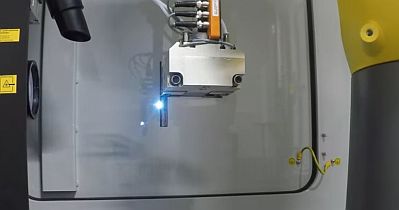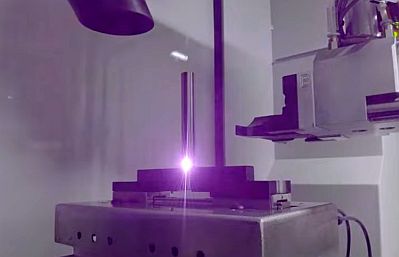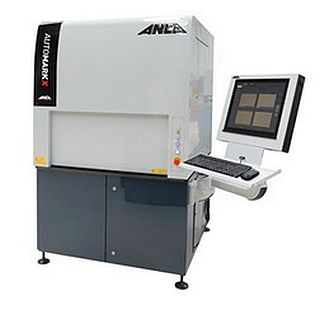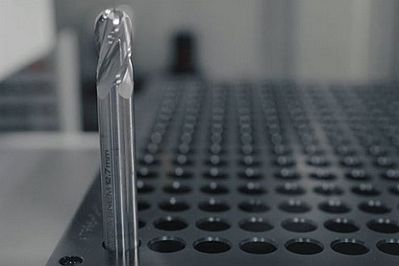Here's How Lasers Could Make Their Mark on Your Shop
Manufacturers across all industries increasingly need to track and trace the lifecycle of products, from manufacture through to retirement. This traceability gives visibility of the history of a part, including its usage and maintenance, helping to maintain high tool quality and productivity. ANCA's Darren Fox offers a few solutions that could be making their mark in your shop.
When you're producing many different tools -- and for a number of different customers -- it's critical to ensure they're clearly marked. When it comes to traceability, there's no room for error.
Why choose laser part marking?
At its most basic, a part must have clear markings, like numbers, text, logotypes, 1D (barcodes) or 2D (DataMatrix, QR) codes and other marks. They must be easy to see and understand and be durable enough to last the lifetime of the tool.

There are various options to help you achieve this, including stamping, painting and others. But laser part marking is a cut above the rest -- no pun intended.
Far from being new and untested, laser technology is very mature, meaning it's been developed and refined over many years to become a reliable, widespread technology for part marking. It creates an indelible mark with minimal disruption to the tool itself, so performance and productivity is never compromised. In an industry where tool specifications are nano-perfect, laser marking can go almost undetected when in use.
Laser marking is the go-to technology in manufacturing. There’s a universal need for every single tool in the market to be clearly marked and for the markings to survive the lifetime of the tool.

An emerging trend in the broader industry requires tools to be traceable -- all tools get an individual serial number that can be traced for regrinding purposes. In certain industries, such as aeronautics, tools must adhere to strict regulations on how often a tool can be used and for what purpose before it must be replaced.
Are there automated options available?
Manual laser marking is a highly labor-intensive task in any manufacturing business. Automating this process saves time and productivity, while also improving precision and repeatability.
Eliminating human error clearly reduces the amount of scrap, recalls from customers and batches being incorrectly marked. Doing away with manual handling greatly helps maintain tool quality, so the chance of a tool being dropped, chipped or scratched is vastly reduced.
VIDEO: AutoMarkX: Automatic Stand-Alone Laser Marking Station
Laser part marking solutions make achieving this simple and precise. AutoMarkX is a standalone machine that's also compatible with ANCA's Integrated Manufacturing System (AIMS), so it can be configured to operate entirely without human intervention, while RoboMate LaserEtch is an integrated system that can be added to the robot loader for in-process marking, making it compact and convenient.

AutoMarkX uses standard pallets or cassettes, and then the process happens automatically. It gives you the flexibility for the tool to be marked not only on the shank, but also at the end of tool and opposite side of the shank.
This machine is packed with capability. By marking the Datamatrix code it gives you the option to serialize and offer customers a traceability solution. But it can also work in standalone mode, in a configuration that suits your individual needs. That could be a cabinet in a factory, or it could be integrated with AIMS and become part of the fully automated, streamlined production process without any need for human interaction.
Automating the process eliminates the need for the operator to be constantly present at the laser marking station, which is the case otherwise – it's a labor-saving solution.
Is it hard to implement automated laser part marking?
This is a process that'll suit any manufacturer. It's a plug and play solution. In its standalone version, plug the unit into power point and start using it straight away.

With these automated machines, installation and setup is minimal and manufacturers can start marking within only a few hours, providing more time and resources to complete more value-adding tasks. Being part of the AIMS platform also gives the flexibility of maximum efficiency now, with the added benefit of being able to upgrade easily as the technology evolves.
Want more information? Click below.
Rate this article
View our terms of use and privacy policy